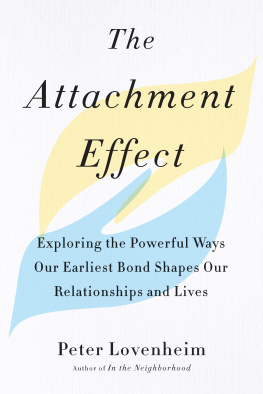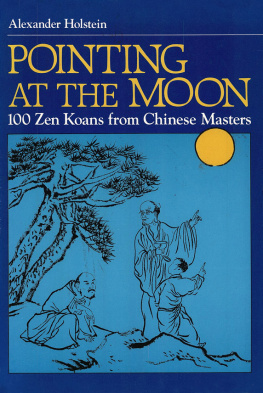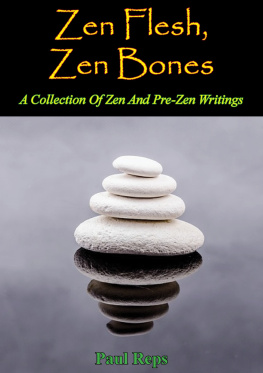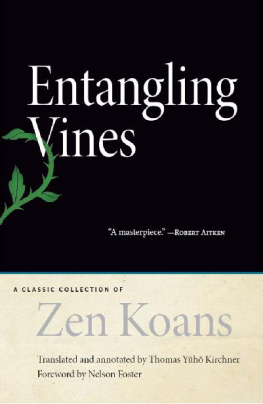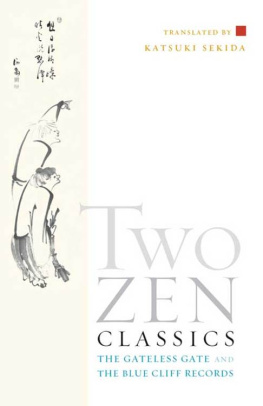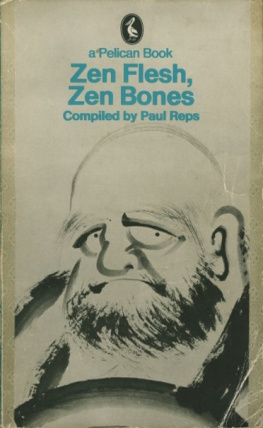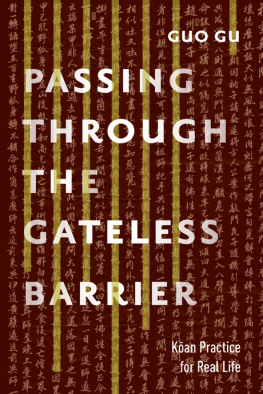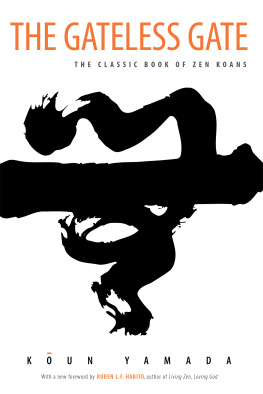Contents
Guide

The author and publisher have provided this e-book to you for your personal use only. You may not make this e-book publicly available in any way. Copyright infringement is against the law. If you believe the copy of this e-book you are reading infringes on the authors copyright, please notify the publisher at: us.macmillanusa.com/piracy.
TO THE LIVING PRESENCE OF YAMADA KUN-KEN RDAISHI
Bamboo shadows sweep the stairs
but no dust is stirred;
moonlight reaches to the bottom of the pond
but no trace is left in the water.
Zenrinkush
BY SENGAI
I could not even have dreamed of serving as a teacher of Zen Buddhism or of making this book if Yamada Kun Rshi had not guided me through Zen practice, both formally as a teacher and informally as a companion and friend. I am endlessly grateful to him for his compassion and wisdom.
My translation grew out of earlier versions made with Yamada Rshi and Katsuki Sekida.
I am grateful to the abbots Reb Anderson and Mel Weitsman of the Zen Center of San Francisco, the staff and members of Green Gulch Zen Farm, and Yvonne Rand and William Sterling for their hospitality during a three-month sabbatical that gave me time and freedom from other responsibilities to work on my commentaries.
My old-time student Nelson Foster edited the outcome and brought a measure of coherence to my meanderings. Craig Twentyman and Anne Aitken read earlier drafts and made a great many helpful suggestions. Anne also took over many of my other responsibilities when I was glued to my desk.
Johanna Bangeman typed and retyped and helped with the appendixes. Carl Varady gave me technical assistance and suggested useful references.
Students at the Koko An Zend, the Maui Zend, and the Green Gulch Zen Farm offered useful ideas when I read parts of the manuscript to their classes. Others who helped in important ways were: David Chappell, Trish Dougherty, Shkin Furuta, Glenn James, Barbara Newton, Shigeru Ohsuka, George Tanabe, Kazuaki Tanahashi, and Norman Waddell.
I am especially grateful to Jack Shoemaker, Dave Bullen, Barbara Ras, and the staff of North Point Press for their competence and creativity in making this book.
In citing quotations, I frequently refer to translations by D. T. Suzuki, Thomas Cleary, C. Y. Chang, Kazuaki Tanahashi, and others. I work from less accessible texts as well, however, and the translations often differ from those cited. These texts include some that are published with English translation, like Ruth Fuller Sasakis Recorded Sayings of Chan Master Lin-chi, as well as other Japanese scholarly studies, and manuscript translations prepared with Yamada Rshi.
Palolo Zen Center
Spring Training Period, 1990
The Gateless Barrier is a collection of stories and verses that present fundamental perspectives on life and no-life, the nature of the self, the relationship of the self to the earthand how these interweave. Such stories and verses are called kans, and their study is the process of realizing their truths. What may be known abstractly becomes personal, a vital experience of ones own. For example: the notion of transcendental oneness becomes a vivid experience of a shared and unbounded nature, and the thought of compassion is felt profoundly in a way that is consistent with its etymology: suffering with others.
Classic kans have proved effective over the centuries and millennia in recordingand evokingespecially illuminating experiences of such fundamentals. Kans are not riddles or puzzles whose trick is in their clever and obscure wording. They are the clearest possible expression of perennial facts which students grasp with focused meditation and guidance.
The original interactions that became kans were challenges to students by their teachers (and vice versa) in old China. Hui-neng asked the head monk Ming about his original face, for example, and Ming realized something important. The question Hui-neng asked Ming was amplified a bit in the trial-and-error process of becoming a kan. This process of amplifying and codifying along with creating new kans continued down through the centuries to Sung times (9601279), when several collections of kans, including this one, were assembled and published.
Kan study developed separately in the two great Buddhist traditions that became Rinzai and St Zen. Rinzai teachers, culminating with Hakuin, tended to systematize kans into a kind of curriculum, while the St teachers tended to pick and choose kans for each particular student. Today kan study survives in the Rinzai school, but it is no longer used in the St. In the early part of this century, the St monk Harada Sgaku (Daiun) broke with his tradition by studying with the Rinzai master Toyoda Dokutan Rshi. Returning to the St fold, he established his own way of kan teaching which (after several generations) inspires this present translation and commentary. This way of teaching cannot be said to be either Rinzai or St, though it draws from each. It has been called the HaradaYasutani school, after its first two teachers, and the Sanb Kydan (Order of the Three Treasures).
Zen study as reestablished by Harada Rshi begins with learning zazen (focused meditation), which I have discussed elsewhere in Taking the Path of Zen and which is also set forth in Yasutani Rshis Introductory Lectures on Zen Training. Such themes are pursued with a keen, inquiring spirit, and the process of resolving them may take a long time, many years in some cases. Finally, the student gains a degree of understanding and is ready for subsequent kans to amplify, clarify, and deepen the original insight.
Through this process, we discover that life and death are the same as no-life and no-death; the other is no other than myself; each being is infinitely precious as a unique expression of the nature which is essential to us all. The inspired student seeks to live this reality within the home and outside, making each turn an occasion for further realization and practice of these fundamental factsperhaps joining with like-minded people for an expression of broad social and environmental concerns. This life practice may have begun before the beginning of formal Zen study. It can continue throughout each of its steps, and there is no end.
My comments on the kans, like those of my betters, including Wu-men in the early thirteenth century, grew out of talks (teishs) given during retreatsin my case to Diamond Sangha students in three cycles over a period of fifteen years. They have been much revised to function as essays while still retaining, I hope, their original flavor as teishs: presentations of the shout.
I use Chinese names for Chinese personages and give Japanese equivalents in parentheses. I use certain Japanese terms like Zen, Mu, teish, kan, and dj, for these are current and some even appear in modern English dictionaries. At the back of the book I offer a glossary of terms used throughout the text; to make the book more accessible, I have used translated forms of certain Japanese terms that are current in Western Zen centers. Familiar words from the Sanskrit like nirvana and sutra are given without diacritical marks. Accents that do not significantly affect the pronunciation of words for English readers are omitted. An acute accent over the letter s in Sanskrit words, as in kyamuni, is pronounced sh. The macron over a vowel in Sanskrit and Japanese gives emphasis and length to that syllable, as in dna.







